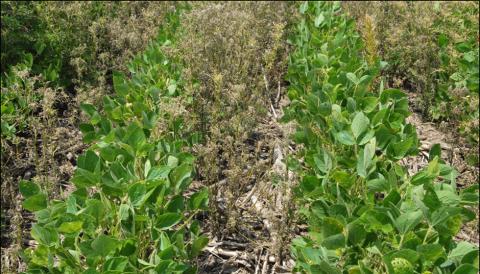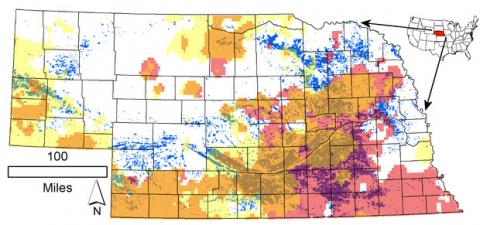Nebraska Research to Advance Tractor Test Methods
March 23, 2018
New research at the University of Nebraska-Lincoln will help bring tractor testing into the modern era by simultaneously assessing the three types of tractor power used to pull implements — power takeoff, hydraulic, and drawbar.
University Research Published in Nature Investigates Climate Effects on Ag Yields
March 22, 2018
While climate change is often described on a global scale, a new University of Nebraska-Lincoln study indicates changing climate trends in the Great Plains between 1968 and 2013 drove about 25% of the collective fluctuations in corn, soybean, and sorghum yields.
2017 On-Farm Research Results Now Online
March 22, 2018
View the results from more than 80 Nebraska on-farm research studies conducted in summer 2017 in a free book, now available online.
On-Farm Research Results: Impact of Torque on Corn Yield
March 7, 2018
This report synthesizes the results of seven on-farm research studies of using Torque™, a seed or furrow-applied growth promoter, in Nebraska between 2010 and 2015.
Herbicide Options for Managing Glyphosate-resistant Common Ragweed in LibertyLink Soybean
March 1, 2018
Results from a 2017 weed management trial on glyphosate-resistant ragweed indicated two applications were often more efficient and cost effective than either three applications or one application of herbicide.
Research Shows Large-Scale Irrigation Reduces Local Precipitation
February 28, 2018
A University of Nebraska-Lincoln researcher has shown that widespread irrigation has resulted in a net moisture loss in Nebraska, a finding that could have worldwide water conservation implications if substantiated by further research.
Corn Residue Removal and CO2 Emissions
February 26, 2018
University research looking at CO2 emissions from two types of residue removal (baling and grazing) compared with a control treatment found little day-to-day impact; however, when looking at cumulative data for the whole year, grazing did appear to affect cumulative CO2 emissions in irrigated crop-livestock systems. This data represents the first year of this study.
Cover Crop and CO2 Emissions
February 26, 2018
Do cover crops affect CO2 emissions from the soil and if so, under what conditions? These were among the questions addressed by university researchers monitoring CO2 emissions from cereal rye cover crops in irrigated and dryland no-till continuous corn treatments.







